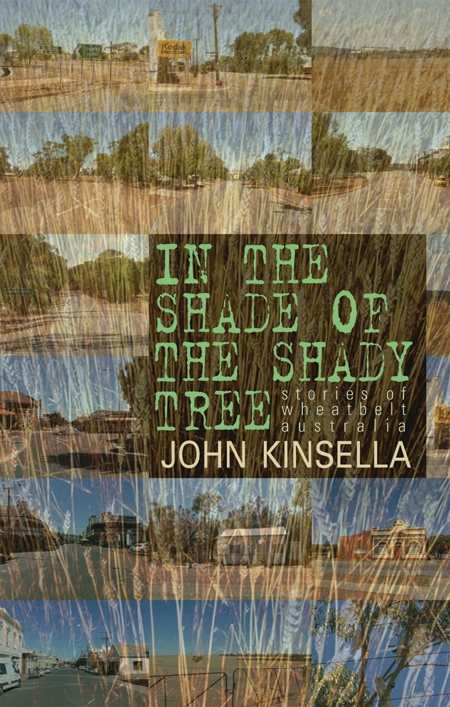In the Shade of the Shady Tree
Stories of Wheatbelt Australia
“Rain” opens John Kinsella’s new collection about rural and small town life in Western Australia’s arid wheatbelt. As the book’s opening story, it’s perhaps a common prayer or even a tease in contrast to the perennial drought conditions and hard lives that Kinsella characterizes.
In the tradition of the long line of small-town serials, dating back through Sherwood Anderson and William Faulkner, most of the stories in In the Shade of the Shady Tree explore the dysfunctional undercurrents that characterize rural life in literature.
One might think that the large, open spaces of Western Australia would allow the cast of characters (drunks, bigots, men of God, Aborigines, hippies, city transplants, WWII vets) a wide berth when navigating their lives around one another, but more often, neighbors get embroiled in conflict and families plod through life’s troubles, usually without an inkling that hope might be possible.
In “Purchase,” a drunk, hateful man uses his son to try to drive away a couple that purchases the land next to his: “The boy was nervous, even frantic around his father. ‘So I told them like you said, Dad. I told them it was an old lead mine and that the tailings are all over the block. That the place is poison. That there’s lead in the well water. Just like I told the other people.’”
The prejudices run deep. The ongoing struggle to make a go of it living off a forbidding land with little or no water gets redirected into hatred and blame: blame against the miscreants, blame against one’s neighbors, blame against the Aborigines.
In “The Appointment,” two older patients wait in a doctor’s office and get to talking while waiting for their eyes to return to normal after dilating. At first, they seem to know many of the same people and are curious why they don’t socialize in the same circles. As the story progresses (and their vision comes back), it becomes clear they have near opposite views about blacks (Aborigines) and how the police treat them. The woman says, “You know, the sort that never work and the sort that are always having fights and have relatives coming in from all over the place to make trouble …Well, he [the police officer] doesn’t handle them properly.” Handle them, thinks the narrator, somewhat stunned by the woman’s lack of humanity.
Kinsella, author of seventeen books of poetry, along with several plays and works of fiction, tells the title story twice, with slightly varying facts (“In the Shade of the Shady Tree” and “Eyewitness”), about a developer cutting down a legendary tree in the middle of a small town to build a fast-food joint. The effect is a disconnect between small-town life and the outside world, where the reality is that so-called progress can erase history as quick as felling a tree with a chainsaw. Life goes on, even as hope is torn from the land.
Reviewed by
Bruce Cuthbertson
Disclosure: This article is not an endorsement, but a review. The publisher of this book provided free copies of the book to have their book reviewed by a professional reviewer. No fee was paid by the publisher for this review. Foreword Reviews only recommends books that we love. Foreword Magazine, Inc. is disclosing this in accordance with the Federal Trade Commission’s 16 CFR, Part 255.


